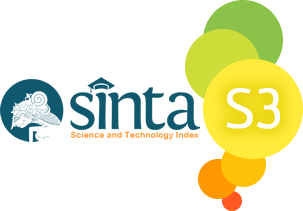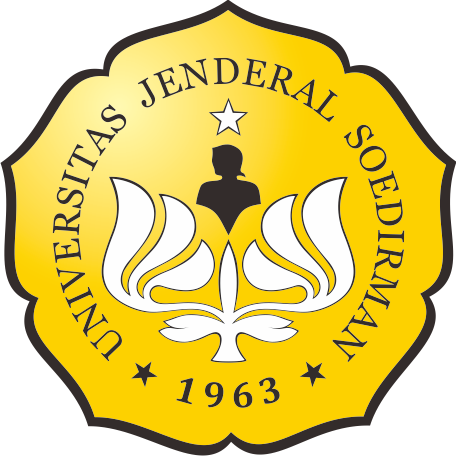PENGARUH PEPTON TERHADAP PERTUMBUHAN EMBRIO ANGGREK Vanda tricolor Lindley var. Suasiv ASAL MERAPI SECARA IN VITRO
Abstract
Orchidaceae is a valuable ornamental plant in Indonesia’s export commodities. The growth of orchid in nature is prolonged due to its microscopic size of the seed and has no endosperm. In the mass-production, an inducer is required to accelerate the growth in an in-vitro culture, one of which is peptone. The embryos used in this study is Merapi endemic orchid, the Vanda tricolor Lindley var. Suavis. This study aimed to determine the effect of peptone on the growth of eight weeks old of Vanda tricolor Lindley var. Suavis embryos and to determine the optimal peptone concentration to induce the growth of the orchid embryo. This experiment was conducted in the Biotechnology Laboratory of the Faculty of Biology Universitas Gadjah Mada from September to October 2016. The treatments applied in this study was a variety of peptone concentrations (0–3 g/L) in growth media to induce eight weeks old protocorm subcultures. The study measured the morphological development of protocorm to determine the effect. The results showed a positive effect of peptone on the growth of orchid embryos at the NP1 treatment concentration of 1 g/L. The growth reached the phase 6 with the rate measured about 6.85±0.001% in the fourth week. This value was higher than the protocorm growth rate when it reached the phase 6 in the fourth week on the NP0 medium measured at 5.22±0.003%, on the medium NP2 at 1.15±0.002%, and on the medium NP3 at 1.02±0.001%. This result showed the effect of peptone concentration to induce the growth of Vanda tricolor Lindley var. Suavis embryo, but the excess concentration of peptone inhibited the growth of protocorm.
Keywords
Full Text:
PDFReferences
Arditti J. 1992. Fundamentals of orchid biology. John Wiley & Sons, America
Arditti J, Ernst R. 1993. Micropropagation of orchids. John Wiley & Sons, Inc. Canada. pp:5–14.
Arnold S, Sabala I, Bozhkov P, Dyachok J, Filonova L. 2002. Development pathways of somatic embryogenesis. Plant Cell Tiss. & Org. Cult. 69:233–249. https://doi.org/10.1023/A:1015673200621
Chugh S, Guha S, Rao IU. 2009. Micropropagation of orchids: a review on the potential of different explants. Sci Hortic. 122(4):507–520. https://doi.org/10.1016/j.scienta.2009.07.016
Comber JB. 1990. Orchids of Java. Charoen Slip Press. Bangkok. p.219.
David D, Jawan R, Marbawi H, Gansau JA. 2015. Organic additives improves the in vitro growth of native orchid Vanda helvola Blume. Not Sci Biol. 7(2):192–197 https://doi.org/10.15835/nsb.7.2.9546
Dwiyani R, Purwanto A, Indriarto A, Semiarti E. 2012. Konservasi anggrek alam Indonesia Vanda tricolor Lindl. varietas Suavis melalui kultur embrio secara in-vitro. Jurnal Bumi Lestari. 12(1):93–98
Grudkowska M, Zagdanska B. 2004. Multifunctional role of plant cysteine proteinases. Acta Biochim Pol. 51(2):609–624
Handoyo F. 2010. Orchids of Indonesia. vol 1. Indonesian orchid Society, Jakarta.
Hsiao YY, Pan ZJ, Hsu CC, Yang YP, Hsu YC, Chuang YC, Shih HH, Chen WH, Tsai WC, Chen HH. 2011. Research on orchid biology and biotechnology. Plant Cell Physiol. 52(9):1467–1486 https://doi.org/10.1093/pcp/pcr100
Islam MO, Ichihashi S, Matsui S. 1998. Control of growth and development of protocorm like body derived from callusby carbon sources in Phalaenopsis. Plant Biotechnol. 15:83–187 https://doi.org/10.5511/plantbiotechnology.15.183
Kauth PJ, Dutra D, Johnson TR, Stewart SL, Kane ME, Vendrame W. 2008. Techniques and applications of in vitro orchid seed germination. Floriculture, Ornamental and Plant Biotechnology. V:377–39.
Kosmiatin M, Husni A, Mariska I. 2005. Perkecambahan dan perbanyakan gaharu secara in vitro. J Agro Biogen. 1(2):62–67
Nhut DT, Thi NN, Khiet BLT, Luan VQ. 2008. Peptone stimulates in vitro shoot and root regeneration of avocado (Persea americana Mill.). Scientia Horticulturae. 115:124–128. https://doi.org/10.1016/j.scienta.2007.08.011
Nodine MD, Bryan AC, Racolta A, Jerosky KV, Tax FE. 2011. A few standing for many: embryo receptor-like kinases. Trends Plant Sci. 16: 211–217. https://doi.org/10.1016/j.tplants.2011.01.005
Park SY, Murthy HN, Paek KY. 2003. Protocorm-like body induction and subsequent plant regeneration from root tip cultures of Dorita enopsis. Plant Science. 164:919–923 https://doi.org/10.1016/S0168-9452(03)00019-0
Razdan MK. 2003. Introduction to plant tissue culture. 2nd ed. Science Publishers, Inc. India. p.71–72
Semiarti E, Indrianto A, Purwantoro A, Isminingsih S, Suseno N, Ishikawa T, Yoshioka Y, Machida Y, Machida C. 2007. Agrobacterium mediumted transformation of the wild orchid species Phalaenopsis amabilis. Plant Biotechnol. 24:265–272. https://doi.org/10.5511/plantbiotechnology.24.265
Shekarriz P, Mohsen K, Shirin DD, Masoud M. 2014. Coconut water and peptone improve seed germination and protocorm like body formation of hybrid Phalaenopsis. Agriculture Science Developments. 3(10):317–322
Utami EDW, Hariyanto S, Manuhara YSW. 2017. In vitro propagation of the endangered medical orchid, Dendrobium lasianthera J.J.Sm through mature seed culture. Asian Pac J Trop Biomed. 7(5):406–410 https://doi.org/10.1016/j.apjtb.2017.01.011
Yadav AS, Deshmukh SR, Kamble PS. 2003. Comprehensive practical and viva in biochemistry. Jaypee Brothers Publishers. New Delhi. p.44
Yu H, Xu Y. 2007. Orchids. In Pua EC, Davey MR. (Eds.) Transgenic Crops VI. Biotechnology in Agriculture and Forestry. Springer. 61: 73–279
Zhang B, Liu F, Yao C. 2000. Plant regeneration via somatic embryogenesis in cotton. Plant Cell Tissue and Organ Culture. 60:89–94. https://doi.org/10.1023/A:1006488119200
Article Reads
Total: 4044 Abstract: 1820 PDF: 2224Refbacks
- There are currently no refbacks.

This work is licensed under a Creative Commons Attribution-ShareAlike 4.0 International License.
This website is maintained by:
Bio Publisher
The Faculty of Biology Publishing
Faculty of Biology
Universitas Jenderal Soedirman
Jalan dr. Suparno 63 Grendeng
Purwokerto 53122
Telephone: +62-281-625865
Email: biologi@unsoed.ac.id
T his website uses:
OJS | Open Journal System
A free journal management and publishing system that has been developed by the PKP (Public Knowledge Project) version 2.4.8.0.
All article content metadata are registered to:
Crossref
An official nonprofit Registration Agency of the International Digital Object Identifier (DOI) Foundation.
Articles in this journal are indexed by:









